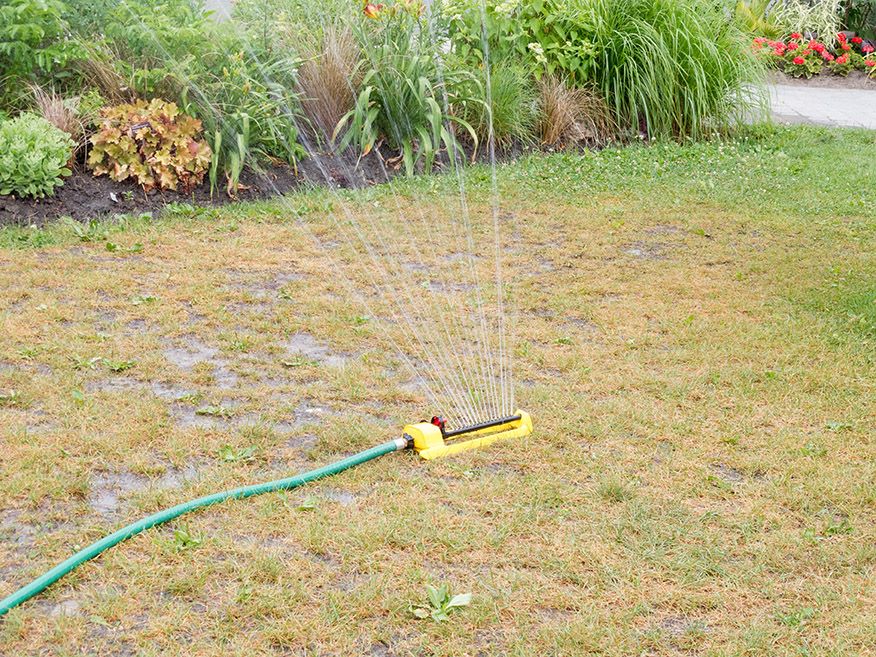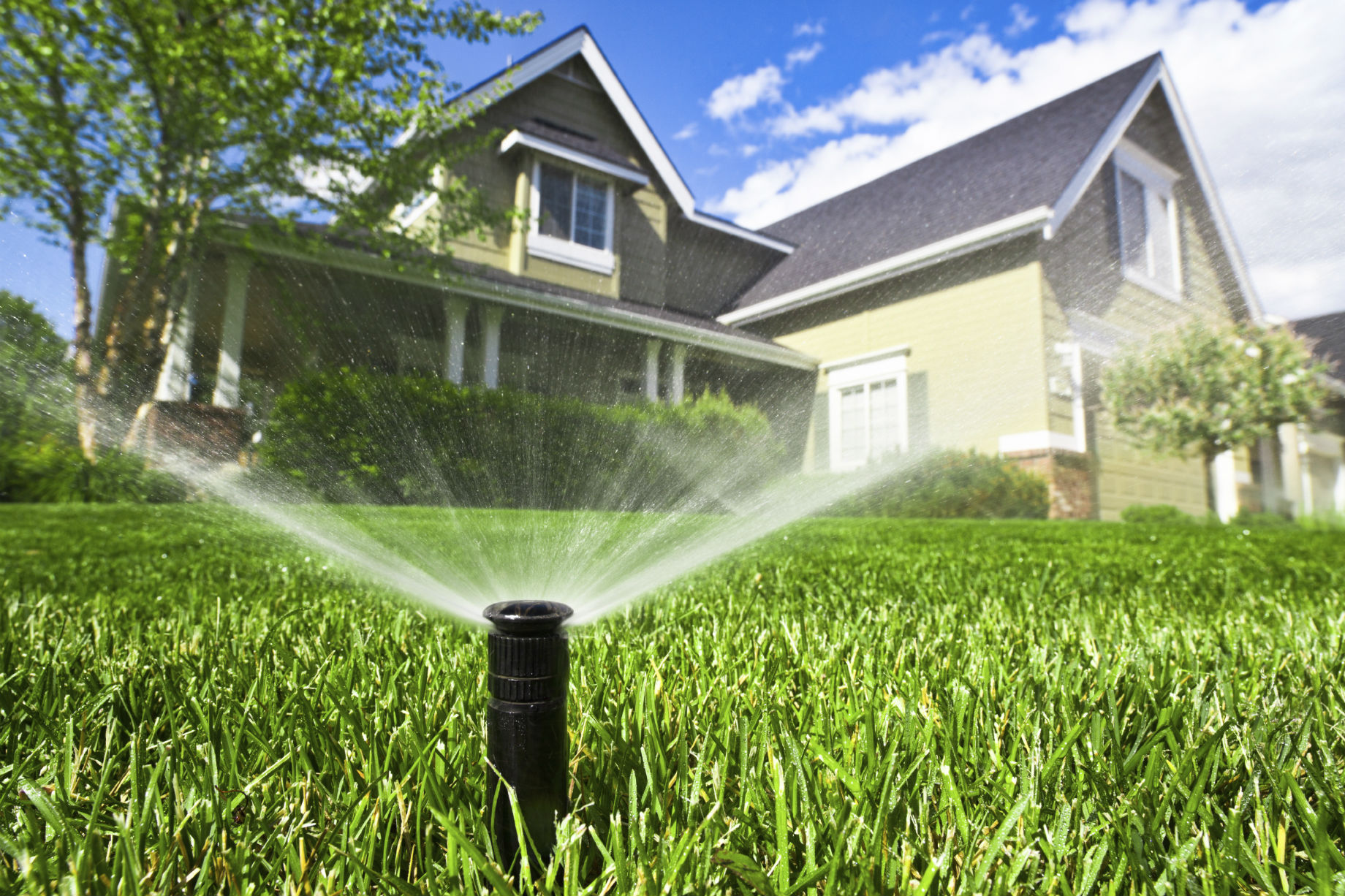Understanding Drought Conditions
Drought, a prolonged period of abnormally low rainfall, poses a significant challenge to our lawns, impacting their health and vitality. During a drought, water becomes a precious resource, and it's crucial to conserve it to ensure the sustainability of our landscapes and the well-being of our environment. By understanding the effects of drought on lawns and implementing water conservation strategies, we can help our lawns thrive even during these challenging times.
Impact of Drought on Lawns
Drought conditions severely impact lawns, leading to various issues that can affect their appearance and overall health. When lawns are deprived of adequate moisture, they experience stress, leading to a range of symptoms that signal their struggle to survive.
Importance of Water Conservation During Drought
Water conservation is paramount during drought periods. By adopting responsible watering practices, we can significantly reduce water usage, ensuring that we have enough water for essential needs while preserving this precious resource for future generations. Water conservation is not just a matter of saving money; it's about protecting our environment and ensuring the long-term sustainability of our landscapes.
Identifying Signs of Drought Stress in Lawns
Recognizing the signs of drought stress in lawns is essential for taking timely action to prevent further damage. By understanding these indicators, we can intervene early, providing our lawns with the necessary care to help them recover and thrive.
- Wilting and browning of grass blades: This is a clear sign of dehydration, indicating that the lawn is not receiving enough water. The grass blades may become limp and lose their vibrant green color, turning brown or yellow.
- Footprints and tire tracks remaining visible: Healthy lawns spring back quickly after being walked on or driven over. However, a drought-stressed lawn will show footprints and tire tracks for longer periods because the soil is dry and unable to support the grass blades.
- Increased weed growth: Drought conditions often favor weed growth. Weeds are more resilient to drought and can outcompete grass for water and nutrients, leading to an increase in their presence in the lawn.
- Thinning of the lawn: Drought stress can weaken grass plants, leading to a thinning of the lawn. This is often accompanied by patches of bare ground where grass has died off.
- Increased susceptibility to pests and diseases: Drought weakens lawns, making them more susceptible to pests and diseases. These stressors can further damage the lawn, leading to a decline in its health and appearance.
Water Conservation Strategies

Conserving water during a drought is crucial for protecting our environment and ensuring the sustainability of our water resources. By adopting water-saving techniques, we can reduce our water footprint and help alleviate the strain on our water systems.
Water-Saving Techniques for Lawns, Best practices for watering your lawn during a drought
Implementing water-saving techniques can significantly reduce your lawn's water consumption without compromising its health. Here's a breakdown of some effective methods:
| Technique | Description | Benefits | Drawbacks |
|---|---|---|---|
| Deep Watering | Soaking your lawn thoroughly but infrequently, allowing roots to grow deeper and access moisture more efficiently. | Promotes deep root growth, reduces the frequency of watering, and improves lawn health. | May require adjusting sprinkler systems or manual watering techniques. |
| Mulching | Applying a layer of organic material like wood chips or shredded bark to the soil surface. | Reduces evaporation, conserves soil moisture, and suppresses weed growth. | May require periodic replenishment and can affect the appearance of the lawn. |
| Aerating | Creating small holes in the soil to improve drainage and oxygen flow. | Enhances water penetration, promotes root growth, and reduces soil compaction. | May require specialized equipment and can temporarily disrupt the lawn's appearance. |
| Watering in the Early Morning | Watering your lawn before the sun gets too high reduces evaporation and allows the water to penetrate the soil effectively. | Minimizes water loss due to evaporation, improves water absorption, and allows the lawn to dry before nightfall. | May require adjusting sprinkler schedules and could lead to wet grass during early morning hours. |
| Rain Harvesting | Collecting rainwater from rooftops or other surfaces for use in irrigation. | Provides a sustainable source of water for your lawn and reduces reliance on municipal water supplies. | May require initial investment in rainwater harvesting systems and storage tanks. |
| Choosing Drought-Tolerant Grass | Selecting grass varieties that are naturally adapted to dry conditions. | Reduces water requirements, requires less maintenance, and promotes a healthier lawn in arid environments. | May have a different appearance compared to traditional grass types. |
Water-Efficient Sprinklers and Hoses
Using water-efficient sprinklers and hoses is essential for conserving water during drought conditions. These tools minimize water waste by delivering water directly to the lawn's roots, reducing evaporation and runoff.
"Choosing the right sprinkler system can save up to 50% of water compared to traditional sprinklers."
Here are some examples of water-efficient sprinkler options:
* Rotary sprinklers: These sprinklers distribute water in a circular pattern, covering a wide area efficiently.
* Impact sprinklers: These sprinklers create a powerful jet of water that penetrates the soil effectively.
* Drip irrigation systems: These systems deliver water directly to the roots of plants, minimizing water loss through evaporation and runoff.
* Soaker hoses: These hoses slowly release water along their length, providing a gentle and efficient way to water plants.
Using a water-efficient hose with a nozzle that adjusts the water flow rate can also significantly reduce water consumption.
"A standard hose can waste up to 50% of water due to leaks and runoff."
Lawn Care During Drought
Droughts can be tough on lawns, but with the right care, you can help your grass survive and thrive. This section will cover key strategies for maintaining your lawn during dry periods.
Choosing Drought-Tolerant Grass Varieties
Choosing the right grass for your climate is crucial, especially during droughts. Drought-tolerant grasses are naturally adapted to survive with less water.
- Warm-season grasses like Bermuda, Zoysia, and St. Augustine grasses are known for their drought tolerance. They typically thrive in hot, humid climates and go dormant during cooler seasons, reducing their water needs.
- Cool-season grasses, such as fescue and ryegrass, are more common in cooler climates. While they are generally less drought-tolerant than warm-season grasses, some varieties like fine fescue can withstand drier conditions.
Fertilizing Lawns During Drought
Fertilizing during a drought can be tricky, as it can stress your lawn further.
- Avoid excessive fertilization, as it can encourage rapid growth, leading to increased water needs. This can further strain your lawn during a drought.
- Use slow-release fertilizers that provide nutrients gradually over time, reducing the need for frequent applications. This minimizes the risk of over-fertilizing during a drought.
- Consider using organic fertilizers, which release nutrients slowly and improve soil health. They can help your lawn better withstand drought conditions.
Mowing Lawns During Drought
Adjusting your mowing practices during a drought is essential for maintaining your lawn's health.
- Mow high, leaving the grass blades longer. This helps shade the soil, reducing evaporation and keeping roots cooler.
- Mow less frequently. Allowing the grass to grow slightly taller between cuts reduces stress on the lawn and helps it conserve water.
- Sharpen your mower blades regularly. Sharp blades make clean cuts, reducing stress on the grass and minimizing water loss.
Benefits of Mulching and Using Organic Matter
Mulching and incorporating organic matter into your soil offer significant benefits during droughts.
- Mulch helps retain moisture in the soil by reducing evaporation. It also suppresses weed growth, minimizing competition for water resources.
- Organic matter, such as compost or shredded leaves, improves soil structure, increasing its ability to hold water. This provides a valuable water reservoir for your lawn during dry periods.
Resources and Additional Information

In addition to the tips and strategies Artikeld above, numerous resources and organizations can provide further guidance and support for managing your lawn during a drought. These resources offer valuable information, tools, and programs to help you conserve water and maintain a healthy lawn.
Online Resources and Local Organizations
| Resource Name | Description | Website | Contact Information |
|---|---|---|---|
| United States Drought Monitor | Provides up-to-date drought information and maps for the entire country. | https://droughtmonitor.unl.edu/ | N/A |
| National Drought Mitigation Center | Offers resources and information on drought preparedness, mitigation, and response. | https://drought.unl.edu/ | N/A |
| Your Local Water Utility | Provides information on water restrictions, conservation tips, and potential incentives. | Check your local water utility website. | Contact information available on their website. |
| Your State's Department of Agriculture | Offers resources and programs related to water conservation and drought-tolerant landscaping. | Check your state's Department of Agriculture website. | Contact information available on their website. |
Local Water Conservation Programs and Incentives
Many local water utilities offer programs and incentives to encourage water conservation. These programs can include rebates for water-efficient appliances, landscape upgrades, and drought-tolerant plants.
- Water-efficient appliance rebates: Many utilities offer rebates for purchasing water-efficient appliances, such as low-flow showerheads, toilets, and washing machines. These rebates can significantly reduce your water consumption and save you money on your water bill.
- Landscape upgrade incentives: Some utilities offer incentives for replacing thirsty lawns with drought-tolerant landscaping. This can include rebates for purchasing drought-tolerant plants, installing drip irrigation systems, and removing turf grass.
- Water conservation workshops and seminars: Many utilities offer workshops and seminars on water conservation, providing valuable information and tips on how to reduce your water usage.
Question Bank: Best Practices For Watering Your Lawn During A Drought
Best practices for watering your lawn during a drought - What are the signs of drought stress in my lawn?
Your lawn may show signs of drought stress if the grass blades turn brown or yellow, feel dry and brittle, or start to wilt. You may also notice that your lawn becomes patchy or develops brown spots.
How often should I water my lawn during a drought?
The frequency of watering depends on several factors, including your soil type, the type of grass you have, and the severity of the drought. It's generally recommended to water deeply but less frequently, allowing the soil to dry out slightly between waterings.
What are some water-efficient sprinklers I can use?
There are various water-efficient sprinklers available, including rotary sprinklers, impact sprinklers, and drip irrigation systems. These sprinklers minimize water waste by targeting specific areas and reducing evaporation.
